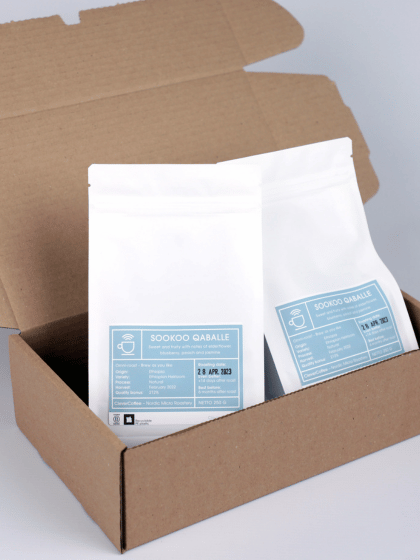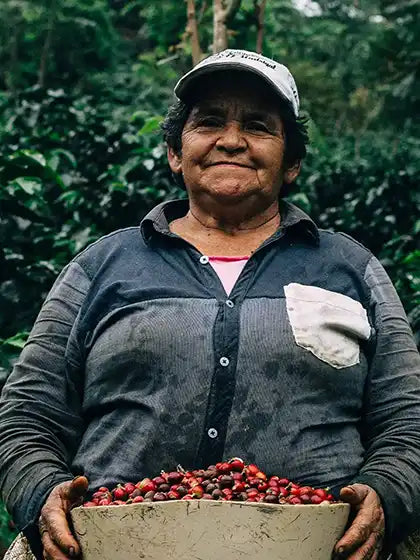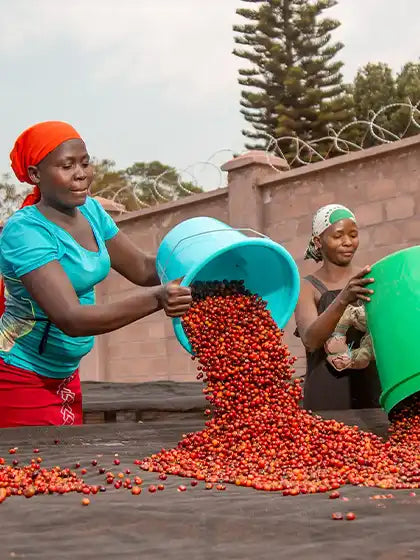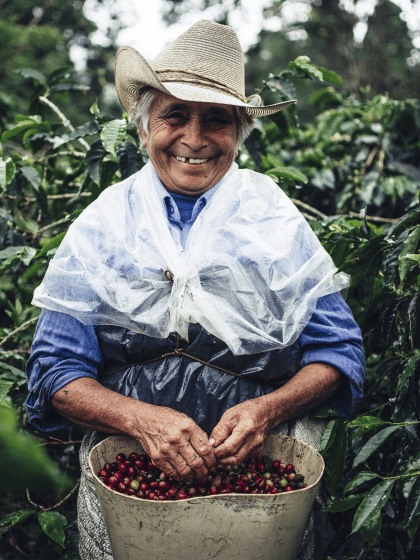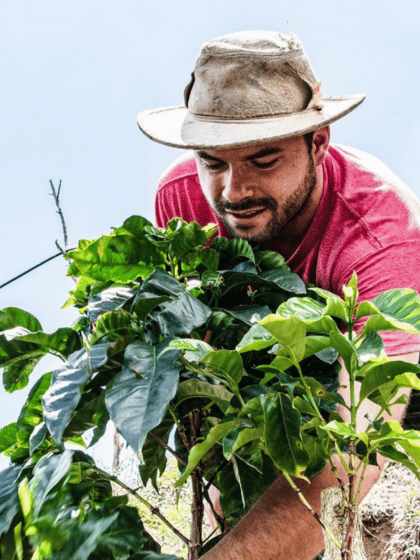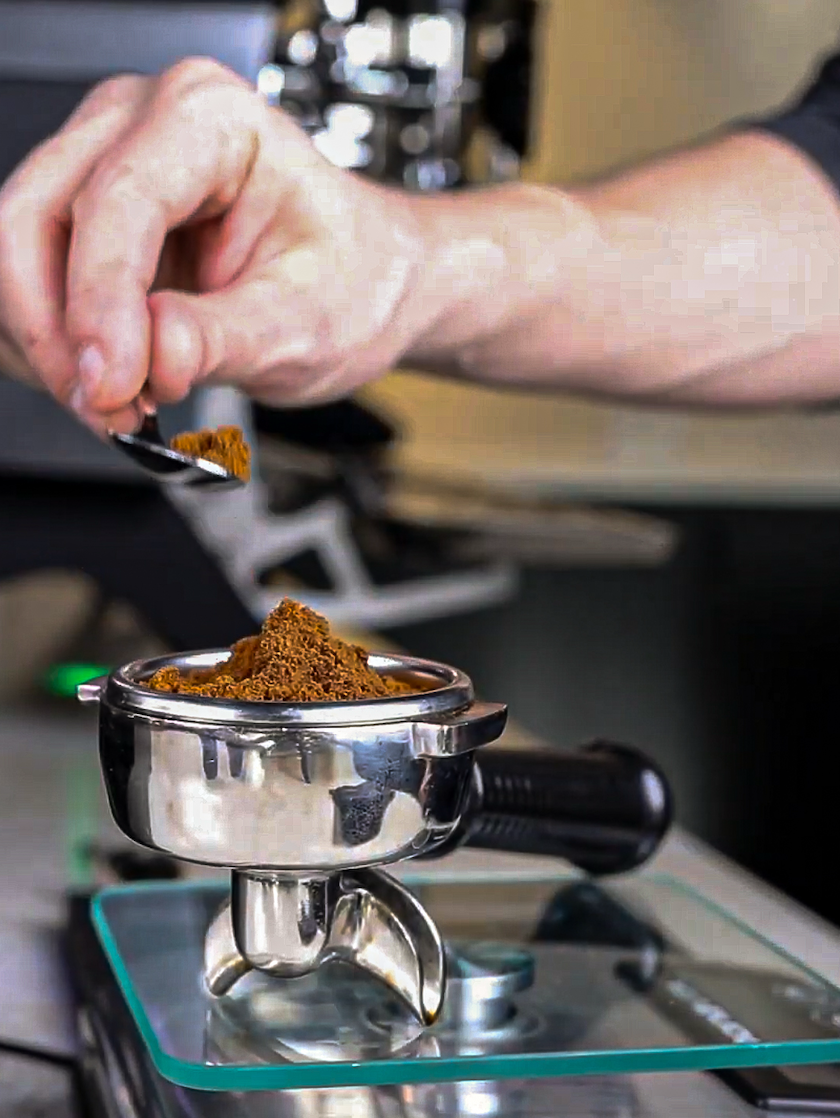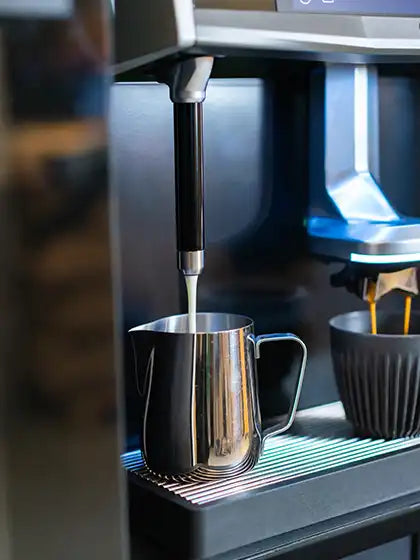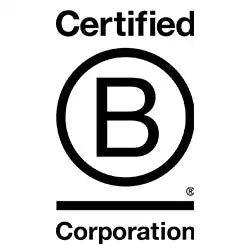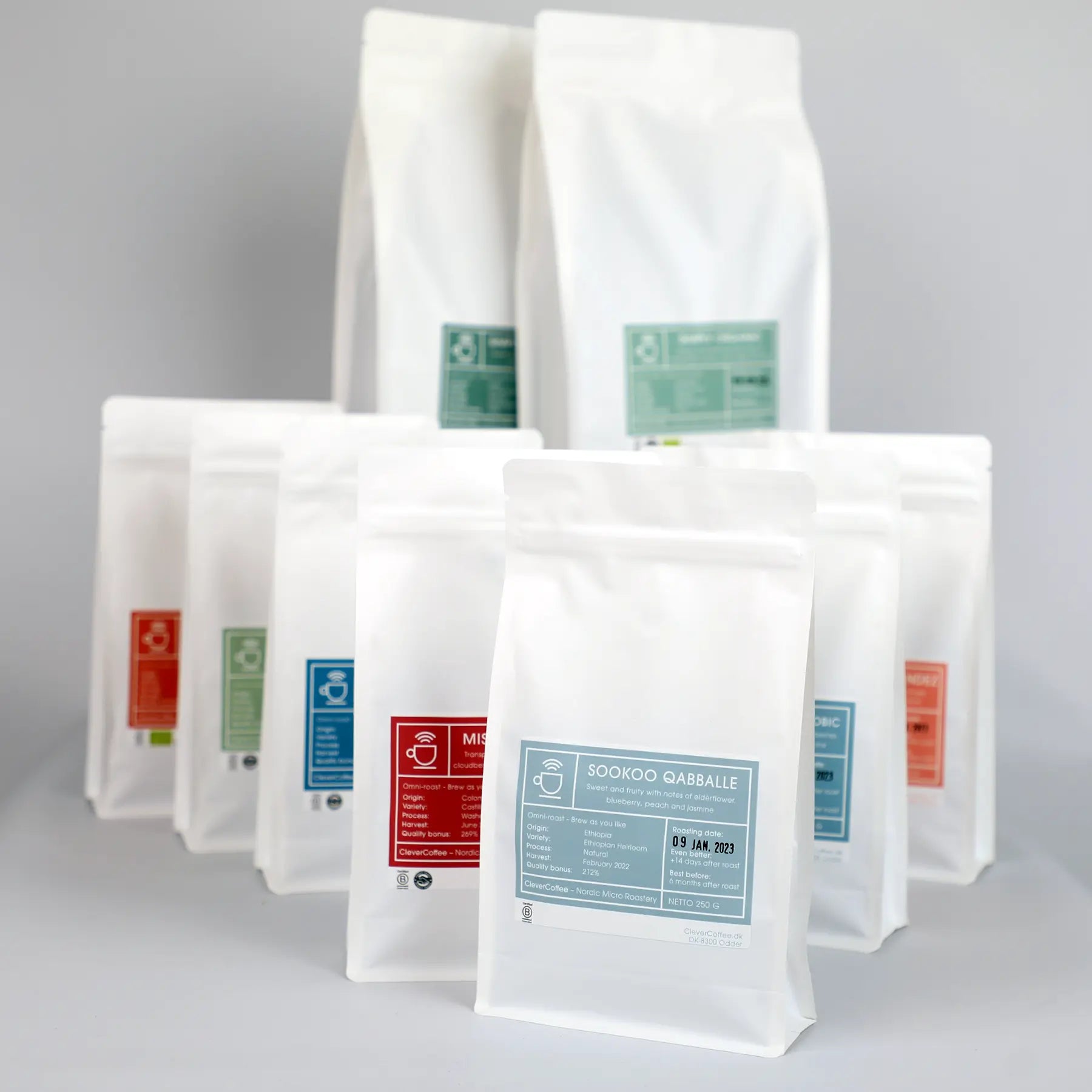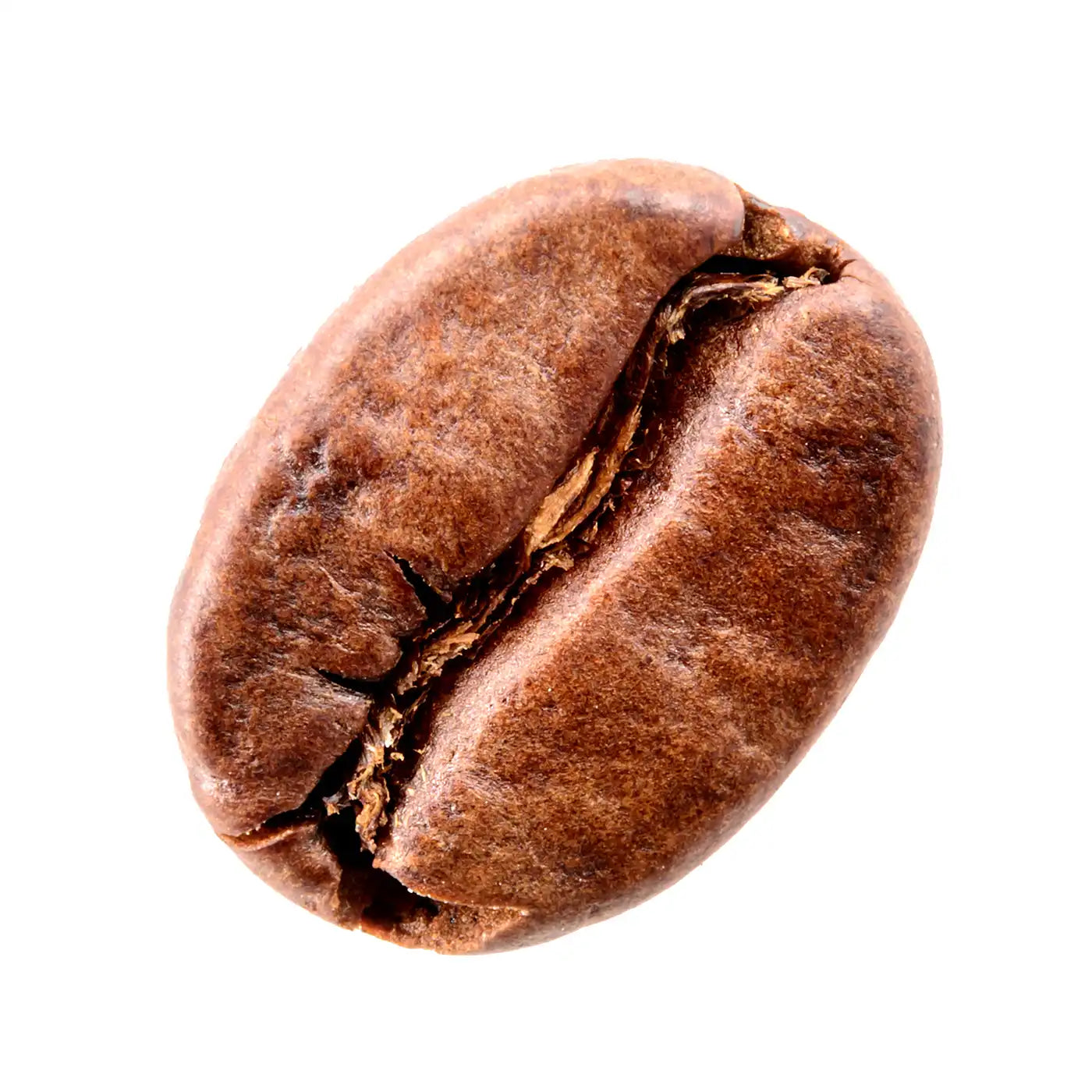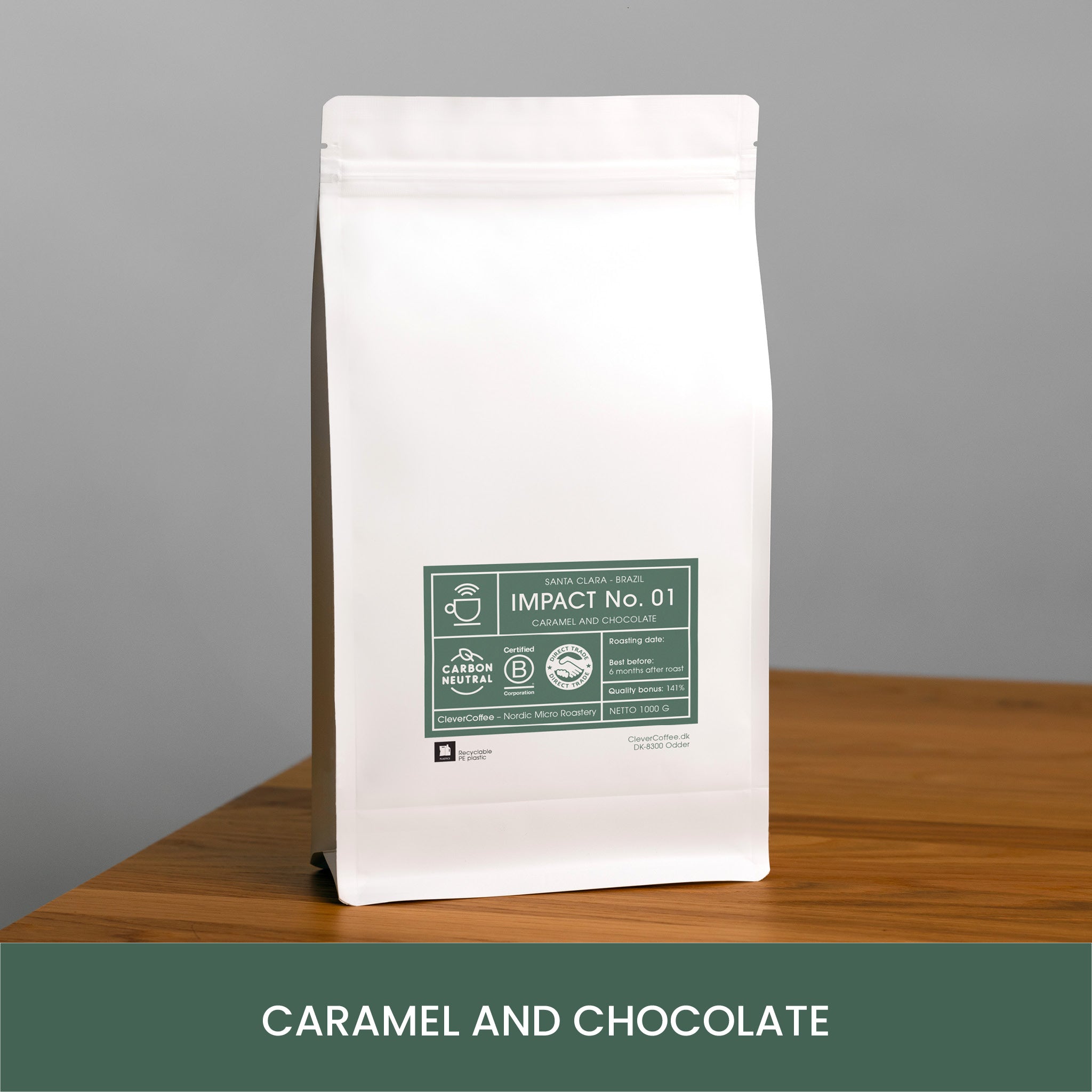

CleverCoffee
IMPACT No. 01 - kaffe fra Brasilien
Vores bedst sælgende kaffe - af gode grunde. Denne kaffe er resultatet af mange års arbejde med kvalitet og ansvarlighed.
Rund krop og sød smag med noter af chokolade og karamel.
Omni-ristede kaffebønner – Bryg som du vil
Denne kaffe er CO2-neutral
Værd at bemærke: Vi arbejder lige nu på, at blive endnu tydeligere i vores kommunikation om drivhusgasudledningen på denne kaffe. Kaffen er stadigvæk CO2-neutral - men I den nære fremtid kommer denne kaffe til at fremgå med et nyt og mere retvisende tal for dens totale udledning (positiv eller negativ). Vi afventer lige nu tredjepartsverificering af de nye udregninger.
Denne kaffe er 100% CO2-neutral efter Net-Zero Standard (SBTi). Vi har nemlig reduceret CO2-udledningen på denne kaffe med mere end 96% og derefter kompenseret for de sidste udledninger.
En tilsvarende standard-kaffe udleder op imod 10,2 kg CO2 pr. kg. kaffe.
Vores kaffe IMPACT No. 01 udleder mindre end 0,4 kg.
Hvordan er det opgjort?
Vi tager vores klimapåvirkning seriøst, og vi har gjort en aktiv indsats over flere år for først at nedbringe vores CO2-aftryk i hele værdikæden, både på dyrkning, transport, emballage og ristning.
Scope 1, 2 og 3 er opgjort efter GHG-standarden og er tilgængelige i vores årlige Transparency Report .
Vores kompensering er gennem VERRA blevet Verified Carbon Standard-certificeret. Udvalget af projekter er guidet af deres Climate Committee og følger Project Drawdown frameworket.
CO2-neutral kaffefarm
Vi kunne ikke have gjort det uden det store arbejde, som kaffefarmerne på gården Santa Clara har udført. Med deres gennemgribende indsatser er det lykkedes dem at blive et komplet CO2-neutralt landbrug.
Læs rapporten fra GRÖN om Santa Clara’s CO2-udledninger.
Verificeret af FORCE Technology
GTS-instituttet FORCE Technology har gennemgået og verificeret vores mange datasæt, så vi - og dem, der køber og nyder IMPACT No. 01 - med ro i maven véd, at kaffen er verificeret CO2-neutral efter Net-Zero Standarden.
Læs FORCE Technology’s verifikationsrapport om vores CO2-opgørelse
Vi betalte kaffebonden 15% mere for denne kaffe
... til sammenligning har Fairtrade-certificeret kaffe typisk en merbetaling på mindre end 10% for bonden. Og certificeringen er heller ikke gratis.
Forskning viser gang på gang, at certificeringer som Fairtrade og Rainforest Alliance ikke har nogen beviselig positiv effekt på kaffebøndernes levevilkår. (Cordes og Sagan, 2021)
Vestlige kaffefirmaer tjener store summer, mens kaffebønder verden over lever i fattigdom. Det er forkert, og det skal vi ændre på.
Derfor betaler vi mere for de kaffebønner, vi importerer.
44% af kaffebønderne verden over lever fortsat i fattigdom. Mindst 5,5 millioner kaffebønder lever under den internationale fattigdomsgrænse på $3,20 om dagen. Undersøgelser viser, at en tredjedel af kaffebønderne tjener mindre end $100 årligt fra kaffeproduktion (Enveritas, 2018; Sachs et al., 2019).
Når vi betaler landmændene mere, giver vi dem mulighed for at investere i sig selv og deres virksomheder. Dette fører til yderligere vækst og muligheden for at investere i mere bæredygtige landbrugspraksisser som reduktion af vandforbrug og genskovningsprojekter.
Beregningen:
Vi betalte landmanden: 6,50 $/kg
Markedsprisen på tidspunktet for kontrakten var: 5,63 $/kg (ICO Brazilian Naturals)
Dermed har vi betalt landmanden 15% mere end markedsprisen
Dokumentation
Se den samlede oversigt over de betalinger vi har lavet for vores kaffebønner i vores årlige transparency report: CleverCoffee: Transparency Report
Kilder
"Responsible Coffee Sourcing: Towards a Living Income for Producers" (Cordes og Sagan, 2021)
"Why do coffee farmers stay poor? : Breaking vicious circles with direct payments from profit sharing" (Ruben, 2023)
"Six Transformations to Achieve the Sustainable Development Goals (SDGs)" (Sachs et al., 2019)
CleverCoffee er certificeret B Corp
Dén kaffe, du handler hos CleverCoffee, sætter et veldokumenteret, positivt aftryk på verden.
B Corp-certificeringen er efter vores opfattelse verdens mest strikse tredjepartsverificering, som garanterer, at du køber din kaffe hos en ansvarlig virksomhed.
Da vi i 2021 blev certificeret var vi blot virksomhed nr. 30 i Danmark. I dag er der mere end 100.
B Corp-certificeringen verificerer vores arbejde inden for:
- Environment
- Social (Workers/Community/Customers)
- Governance
Vi har dermed omfattende dokumentation for, at vi bruger vores primære forretning til at skabe positivt aftryk på verden.
Som kunde hos CleverCoffee bidrager du til, at kaffefarmerne kan leve et liv over fattigdomsgrænsen, og at de har råd til at udvikle sine landbrug, så de har en langsigtet indtægtskilde.
Ud over at bidrage positivt til kaffebøndernes levevilkår, er CleverCoffee's B Corp-certificering din sikkerhed for, at vi altid handler vores kaffer ansvarligt og med miljøet for øje.
Hvad var vores score?
Da vi tilbage i 2021 blev certificeret fik vi følgende score:
- Governance 15.7
- Workers 20.0
- Community 27.2
- Environment 25.2
- Customers 0.0
I alt: 88.2
I 2024 har vi påbegyndt recertificeringsprocessen. Pågrund af nye initiativer og fremgang forventer vi en væsentlig stigning i point til vores nye certificering.
Dokumentation
Denne kaffe er handlet direkte hos kaffefarmeren - Uden mellemmand.
Vi kender kaffefarmerne personligt, fordi vi handler direkte med dem. Dermed har vi en meget gennemskuelig værdikæde uden unødvendige mellemled.
Det giver jer en ekstra sikkerhed og bringer jer tættere på farmen.
Direkte handel medfører bl.a.:
- Mere transparens
- Bedre sporbarhed
- Bedre betaling til kaffefarmeren.
Langt størstedelen af vores kaffe er handlet direkte hos kaffefarmeren. I 2024 var 98% af vores kaffe handlet direkte.
Vi skærer mellemmanden fra, så vi ved hvor betalingen lander og dermed kan vi garanterer at mest muligt lander hos kaffefarmeren, som i mere end 40 år har været underbetalt.
Når vi handler direkte kan vi bedre sikrer kvalitet og ansvarlighed hos producenten, og ligeledes har farmerne mulighed for at få oplysninger om det europæiske marked, nye EU lovgivninger mm. gennem vores partnerskab.
Med direkte handel har vi langt højere grad af transparens og sporbarhed, noget der er vigtigt for eksempelvis at kunne dokumentere farmens produktionsmetoder, arbejdernes arbejdsvilkår og om en bestemt kaffe har medvirket til skovrydning.
En kort og gennemskuelig forsyningskæde
Vi arbejder altid med så kort og gennemskuelig en forsyningskæde, som muligt. 98% af vores kaffe er handlet direkte hos kaffefarmen, altså uden at bruge en mellemmand.
Langt størtedelen af vores ristede kaffe bliver også købt direkte hos os - med nogle enkelte forhandlere som undtagelse, såsom kaffebarer og specialtetsforretninger. Man kan ikke købe vores kaffe i nogen store kæder eller på online markedspladser.
Dermed er der færre parter der skal “have en bid af kagen” og vi sikrer en bedre betaling for kaffefarmene, som i årtier har været underbetalt og levet i fattigdom.
Forsyningskæde for denne kaffe ser sådan ud:
- Kaffen er dyrket i Brasilien i området Campo Das Vertentes
- Kaffebærene er blevet processeret på kaffekooperativet Sancoffee's egen vaskestationen
- De grønne kaffebønner er importeret direkte til CleverCoffee med skib til Aarhus Havn
- Kaffen er ristet og pakket hos CleverCoffee i vores eget risteri udenfor Aarhus
Smag på verden
Kaffe på abonnement
Få en ny friskristet kaffe leveret til døren hver eneste måned og få adgang til eksklusive udgivelser.

